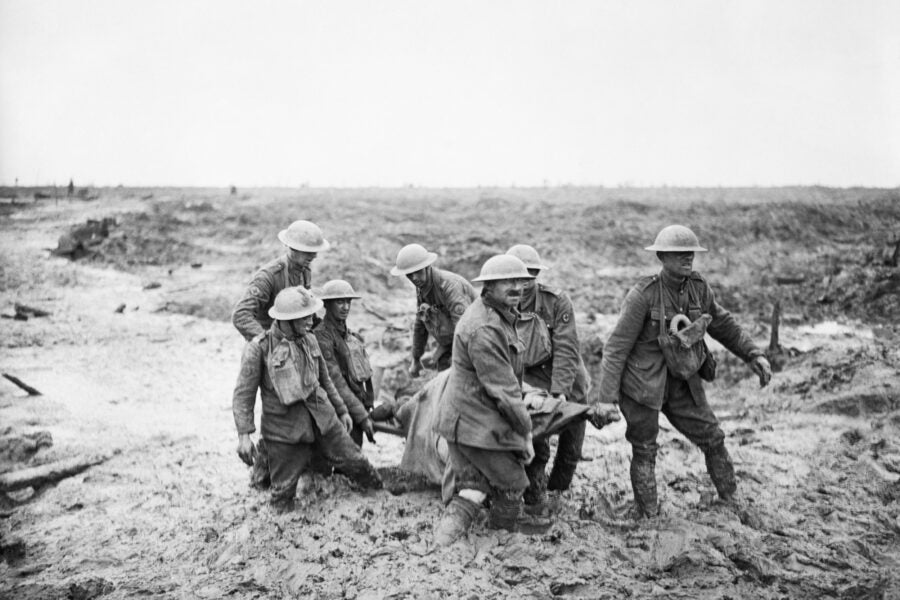The mud.
It was probably worst in Belgium, Ypres I-V (Passchendaele was Ypres III):

Because of the incompressibility of water the muck itself became a weapon, acting as a solid when forced through human tissue by explosions. Nasty business for the surgeons as well as the wounded.
From the Harvard Gazette, October 5:
Study offers clues to how weather affected world’s deadliest disease outbreak

A new collaborative study by a group of scientists and historians finds a connection between the Spanish flu’s European outbreaks, including its most deadly one at the end of World War I, and a six-year period of atrocious weather taking place at the time, which blew in cold temperatures and torrential rain from the North Atlantic.
The findings by a team led by Alexander More, a research associate in the Initiative for the Science of the Human Past at Harvard, combines ice-core data from a European glacier with epidemiological and historical records, as well asinstrumental readings in order to map temperature, precipitation, and mortality levels from what they term a “once-in-a-century climate anomaly.” They find the most miserable weather overlapped or just preceded peaks in Spanish flu mortality. The crests also coincide with some of the war’s most notable battles in the years before the flu’s arrival — the Somme, Verdun, Gallipoli. Historical accounts of those actions detail bloody warring between combatants additionally plagued by frostbite, water-filled trenches, and unending mud.
More, who is also an associate professor of environmental health at Long Island University and an assistant research professor at the University of Maine’s Climate Change Institute, said though many other factors doubtless played roles in the outbreak’s deadliness — not least the virus’ natural virulence in a population whose immune systems had never seen it before — the unusual environmental conditions likely also played a role, causing crop failures, physically stressing millions of men living in precarious conditions, and potentially interrupting migratory patterns of waterfowl that are known to carry the disease.
While the rain and mud of the battlefields have been heavily chronicled, “the thing that we didn’t know was what anomaly caused that,” More said. “We also didn’t know how that anomaly functioned, that it was a six-year anomaly. We didn’t know the close pattern between the precipitation record and the pandemic. Basically, we saw a spike in cold, wet marine air from the northwest Atlantic that came down into Europe and lingered.”....
....MUCH MORE